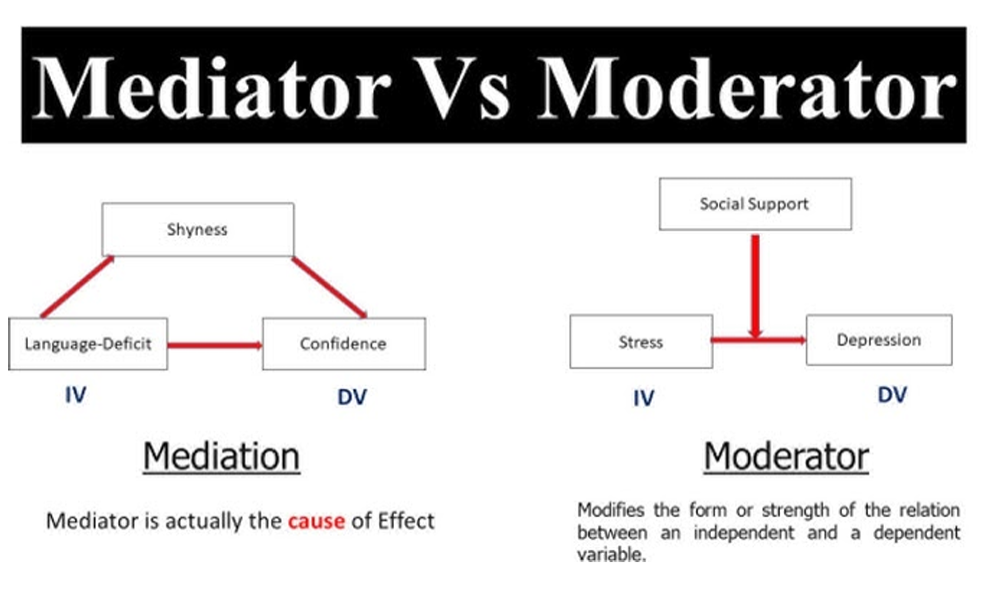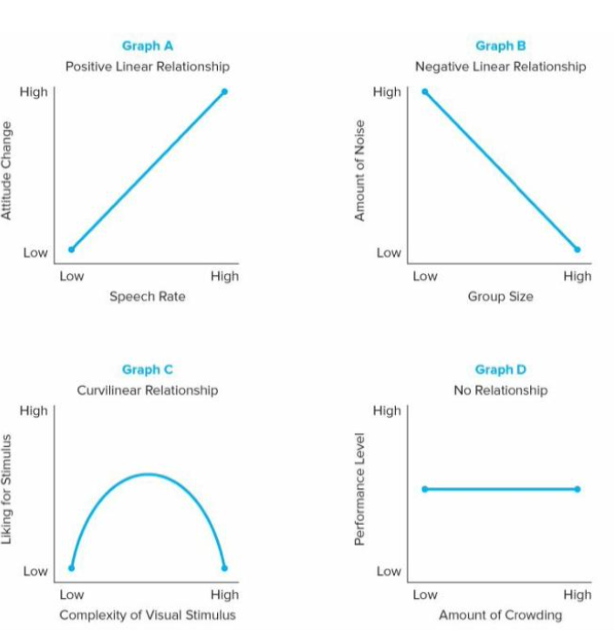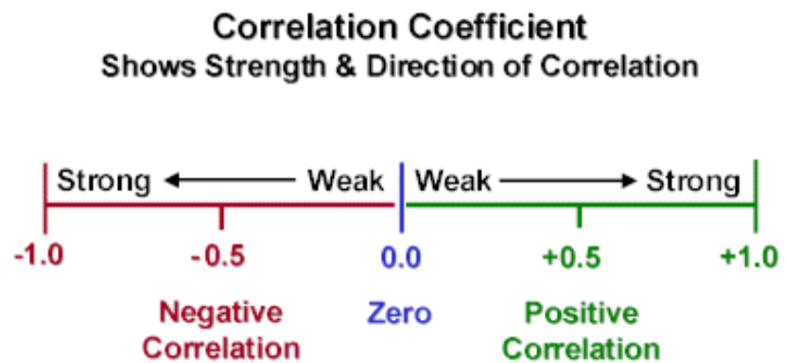Research Issues
Definition (#f7aeae)
Important (#edcae9)
Extra (#fffe9d)
Variables:
Any event, situation, behavior or individual characteristic.
Each variable is a general class, there are specifics within that can vary called levels.
Some levels contain values.
Types:
Situational variable: Related to the characteristics of a situation. Ex: environmental factors.
Response variable: Responses we receive from participants. Ex: problem solving, recall time.
Participant variable: Individual differences. Ex: gender, educational background.
Mediating variable: Variable which explains the relation between the IV and DV.
Explains why there is a relation between the 2 variables.
A potential mechanism for an IV to produce changes in the DV.
Ex: Socio-economic status and reading ability in children. Parental educator level can be a mediator.
Moderating variable: Variable that affects the strength of the relation between the IV and DV.
Ex: Link between video game playing and aggression.
Moderator: Age, kids may be more aggressive but not for adults.

Independent variable: The variable researchers can change or control.
Dependent variable: The variable being measured or observed based on that change.
Variables are abstract concepts, we need to transform them into concrete form of manipulations.
4 Categories: Based on the measurement of the variable.
Nominal (categorical): Color, gender, nationality.
Ordinal: SES, educational level, ability level.
Interval: No true zero. Ex: Temperature, credit score.
Ratio: Consists of true zero. Ex: height, weight.
Operational Variables:
Variables are abstract concepts, to transform them into concrete form of manipulations.
These variables need to be defined in terms of specific methods used to measure or manipulate it. This allows for empirical research.
Relationship between Variables:
Positive correlation:
As 1 variable increases, there’s an increase in the 2nd variable.
Points lie in a straight line in a positive gradient.
Negative correlation:
As 1 variable increases, there’s a decrease in the 2nd variable.
Points lie in a straight line in a negative gradient.
No correlation:
There is not connection between the variables.
There is no pattern in the points.
Patterns between Variables (Graphs):
Positive Linear Relationship: Increase in value of 1 variable, is accompanied by increases in the values of the second variable.
Negative Linear Relationship: Increase in the value of 1 variable is accompanied by decreases in the value of the second variable.
Curvilinear Relationship: Increases the values of one variable, are accompanied by both increases and decreases in the values of the other variable.
No Relationship: There’s no relationship, the graph is just a flat line.

Correlation coefficient: A numerical index of the strength of relationship between variables.

Error Variance:
When measuring a variable (test scores, reaction times), not all differences between people are due to the variable we’re studying.
Some variability comes from random factors we can’t control; this is called random or error variance.
The goal of scientific research is to reduce random variability by identifying systematic relationships between variables.
Determining whether variables are related:
Non-Experimental Method:
Observing variables of interest.
Asking people to describe their behavior, directly observing behavior.
Difficult to determine which variable causes the other.
1st problem: Directionality.
2nd problem: Extraneous variables; Danger that no direct causal relationship exists between the two variables.
Experimental Method:
Direct manipulation and control of variables.
The researcher manipulates the first variable of interest and then observes the response.
Able to reduce ambiguity better, and uncertainty in making conclusions.
Experimental control: All extraneous variables are constant so they cannot influence results, ensuring any differences between groups are due to the manipulated variable.
Randomisation: Randomly assigning participants to groups makes it equally likely that any extraneous factors (age, prior knowledge) are spread out across conditions.
Issues with Experimental Research:
Experiments are artificial:
High degree of control in lab experiments can limit the generalizability of the results.
Researcher can sometimes do field experiments, where the variable is manipulated in a natural environment.
Ethical and Practical Considerations:
Child rearing practices, alcoholism, social issues, maternal employment.
Participant Variables:
Gender, ethnicity, nationality, marital status cannot be allocated randomly.